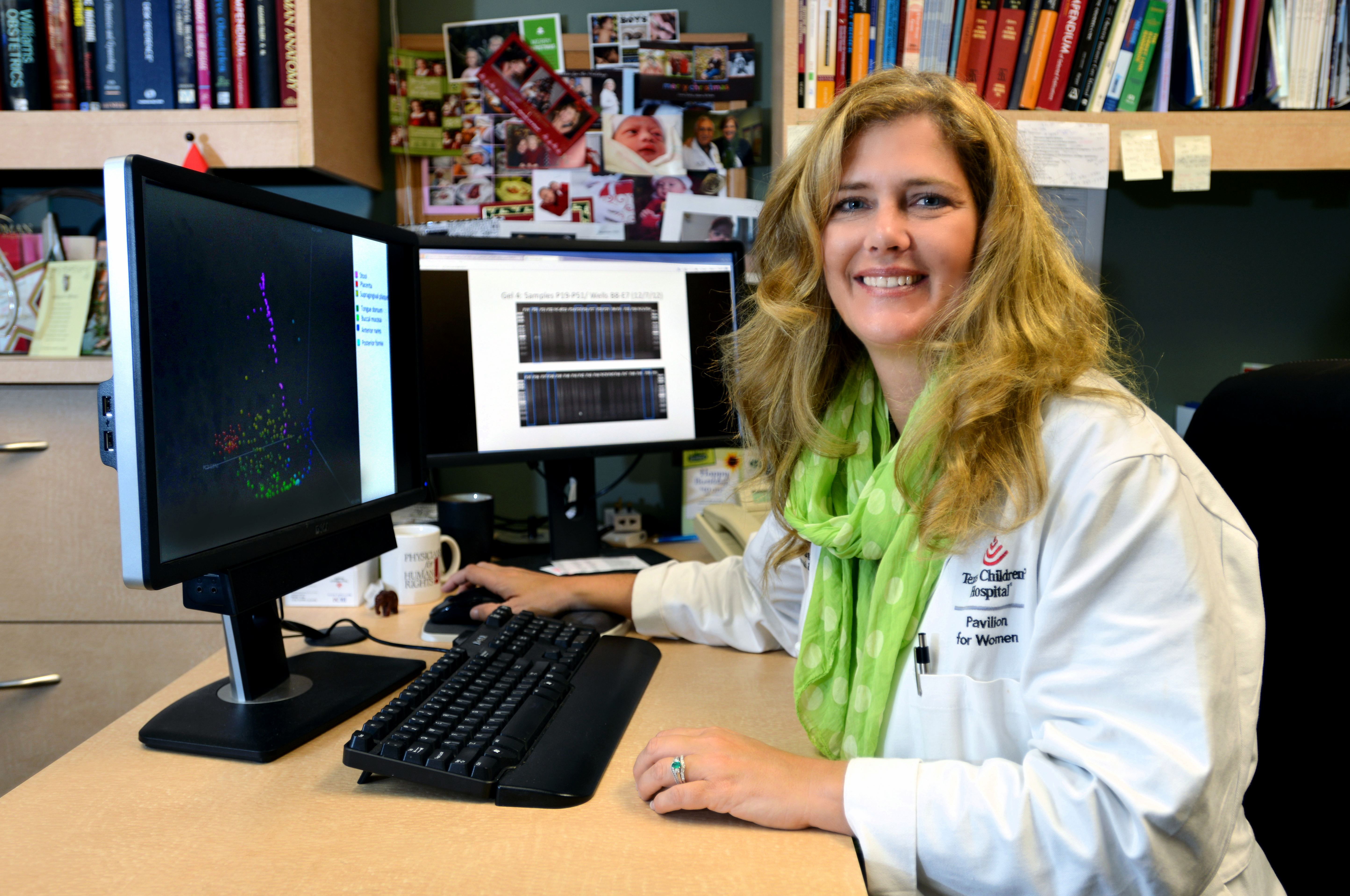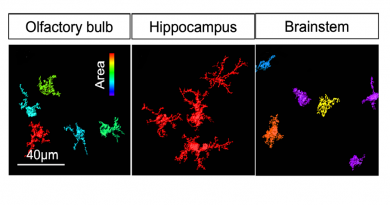Effects of low birthweight span generations but are overcome with diet

By Ruth SoRelle, M.P.H.
Rat pups born too small are likely to be obese in adulthood and at greater risk for metabolic syndrome and insulin resistance, which often precede diabetes and heart disease – all as a result of epigenetic changes that affect the architecture of the DNA (genetic code) and chromatin (histone code).
Those findings by Dr. Kjersti Aagaard, associate professor and vice chair for research in the Baylor College of Medicine department of obstetrics & gynecology, set the stage for understanding how growth in the womb can affect an animal later in life. In their latest study published recently in the FASEB Journal, Aagaard and her colleagues found that the effects of fetal growth restriction can be transmitted from the grandmother to both the mother and father – and then to the grandpups.
Three generations
What was unique about these sets of experiments was that the transmission from grandma to grandpups did not require the parents themselves to be stressed, obese, or show any signs of metabolic disease. However, a special diet enriched for nutrients in the “1-carbon pathway” given to parents could “rescue” their progeny (the grandpups) from adult metabolic disease—but not growth restriction at birth.
“Particularly interesting was our finding that this low birthweight in the grandpups could occur if the growth restriction occurred in either the maternal or paternal lineage, even when there was no insult or stress to the pregnancy,” said Aagaard.
In addition, she said, “The low birthweight grandpups developed metabolic syndrome as adults.” This includes obesity, insulin resistance or diabetes, high cholesterol and other lipid or fat dysfunctions. “These changes occurred in both the second and third generations. The epigenetic changes that led to these conditions were detected in the pups and grandpups long before the metabolic syndrome developed.”
However, if moms and dads receive a diet supplemented with nutrients and cofactors that are part of the folic acid and other critical 1-carbon metabolite pathways, their pups avoid the negative effects of low birthweight.
New finding
“This finding of inheriting low birthweight across generations is new, as is prevention of the adult metabolic disease later in life with essential nutrient supplementation,” said Aagaard.
The scientists started with two groups of female rats. In one group, they intervened by surgically decreasing the blood supply to the uterus in the days before birth to insure that the pups would be born small while the other underwent a sham surgical procedure. The pups delivered normally, giving rise to the first generation. Those born to moms who had undergone the procedure were small at birth while the other group was normal.
Later, at the time of weaning, the pups were divided into two additional groups. One group received the nutrient-supplemented diet after weaning and other group received a normal diet. These mom and dad pups were matured to early adulthood, prior to the onset of metabolic disease, and were bred with one another to produce grandpups and maintained on their allocated diets. If either of the parents had been low weight at birth, the resulting pups were also low birthweight. The grandpups were kept on the diets their parents had received and followed as long as a year. They were tested for obesity, diabetes and abnormalities in their lipid levels. They also collected tissue from some animals to look for epigenetic changes to the DNA.
Effects of low birthweight with moms not surprising
Aagaard was not particularly surprised to see the effects of low birthweight cross to the third generation when it started with the moms.
“Eggs are formed in utero,” she said. What did surprise her was that it was true for the dads as well, although the effect was not quite as strong.
The effect of diet was also surprising. The pups that received a normal diet were twice as heavy as their counterparts on the special nutrient diet. They also developed obesity, early diabetes and insulin resistance as while as abnormal fat or lipid profiles.
When the researchers looked at the epigenetic and histone codes of the animals, they found that the epigenetic changes (in this case, increased methylation of a particular transcriptional site in a gene important in regulating fetal growth) in the low birthweight pups were reversed when they received the special diet. (Methylation involves the addition of a methyl molecule to the site, usually turning off a gene.)
The study is important for human health, she said. It supports European studies that show grandchildren can be low birthweight if their parents were low birthweight as well.
Preventing metabolic syndrome possible
“More important, it suggests that although we cannot prevent low birthweight children or grandchildren with a diet rich in essential nutrient, we can prevent the adult metabolic syndrome that stems from the growth restriction,” she said. “Given that 6 to 10 percent of all children are low birthweight and that nearly half of all reproductive-aged women are obese, this is important for metabolic health and disease.”
“These findings further underscore the importance of long term follow up studies, and notably interventions in pregnancy that may have long term impacts which we cannot easily or reliably measure at birth,” said Dr. Maxim D. Seferovic, who along with Dr. Danielle Goodspeed is a first author on the report.
Others who took part in the work include: William Holland of the department of internal medicine at the University of Utah in Salt Lake; Robert A. McKnight of the department of pediatrics at the University of Utah, Scott A. Summers of the Program in Cardiovascular and Metabolic Diseases, Duke-NUS Graduate Medical School in Singapore; D. Ware Branch of the department of obstetrics and gynecology at the University of Utah and Robert H. Lane at the department of pediatrics at the Medical College of Wisconsin and Children’s Hospital of Wisconsin in Milwaukee.
Funding for this work came from NIH Grant DP21DP2OD001500-01 and the NICHD RSDP 5K12HD00849, both to Aagaard.



